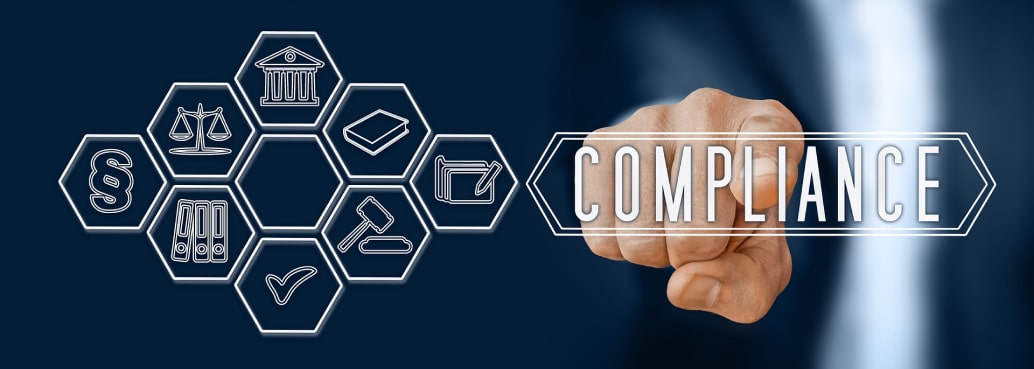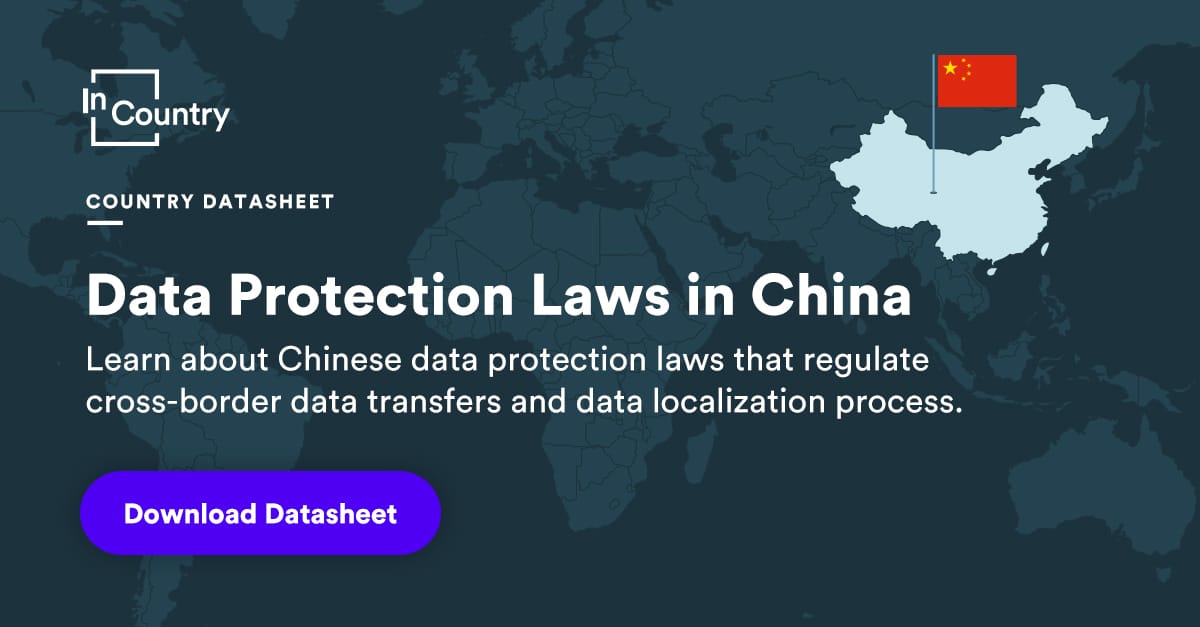Many companies worldwide have moved their IT systems to the cloud, hoping to increase their business’ agility or decrease their hardware expenses.
Based on Gartner, more than 30% of businesses regard cloud investments as top-three investment priorities. In 2021, ZDNet reported that ‘Cloud computing has emerged as the de facto paradigm of IT because it was accelerated by remote work, digital transformations, and the COVID-19 pandemic’.
IT leaders can use this article to discover cloud compliance standards and understand which questions to ask current and potential cloud vendors to stay in compliance. We also provide the cloud compliance checklist to help you identify suitable compliance standards for your organization.
What is the Cloud?
Contrary to traditional on-premise infrastructure, cloud computing refers to services and infrastructure made available over the internet. A cloud server hosts a company’s applications offsite using virtual technology. Data can be backed up regularly, no capital expenses are necessary, and companies only have to pay for the resources they consume.
In an on-premise environment, a company hosts everything in-house, while in the cloud environment, the host hosts all of that for you. This allows companies to pay as needed when they need it and effectively scale on a large or small basis depending on general use, user needs, and company growth.
The type of cloud deployment a company chooses is determined by their needs – public, private, or hybrid. Small and mid-sized businesses typically select the public cloud, while enterprises often use a private cloud to run their infrastructure.
For those organizations planning aggressive expansion around the world, the cloud appeals even more since it makes it possible to connect with customers, partners, and other businesses from anywhere with minimal effort.
Cloud vs. on-premise
The cloud’s increasing popularity is no surprise since its promise of newfound flexibility offers enterprises everything to save time and money to improve agility. IT decision-makers agree that they’ll need to leverage new cloud and SaaS applications in addition to their on-premise and legacy systems to achieve their business goals.
In earlier days, on-premise software, which is installed behind a company’s firewall on company servers, was the only option for businesses for a long time and may continue to meet your business needs. On-premise applications are also reliable, secure, and give enterprises control they cannot get from the cloud. Then why would a company dip its proverbial toe into the cloud if that security is already there?
In today’s enterprise IT world, a company must consider many factors before deciding whether a cloud infrastructure is a right decision. Many enterprises are unwilling or unable to make the cloud leap, relying instead on their tried-and-true legacy and on-premise applications to conduct their business. To know which option is right for your organization, you must understand the differences between on-premises and cloud-based services and infrastructure.
When comparing cloud vs. on-premise, it is essential to consider the needs of your business. Whatever option you choose, there are trade-offs, so it is essential to be fully informed before choosing how many on-premises or cloud services to implement at your company.
The downside of on-premise environments is the costs associated with managing and maintaining the entire solution can be substantially higher than in a cloud computing environment. On-premise setups require their server hardware and software licenses, IT staff to support and manage potential issues that may arise, and software integration capabilities. This doesn’t even consider the amount of maintenance a company must do when something breaks or stops working.
Besides technical issues that may arise when moving to cloud, global companies have to consider cloud security compliance challenges.
What is cloud compliance?
If you are moving into the cloud, it is vital to know in which countries your data will be processed, what laws are in place, how they will affect your business, and then follow a risk-based approach to comply with them.
Therefore, cloud compliance is about following cloud compliance laws and regulations. Since there are so many kinds of laws in each country (like Russia or China) – such as data localization laws, cybersecurity laws, and data protection laws, it isn’t always easy to pinpoint relevant regulations and cloud multi regional compliance and legal issues arise.
You also need to examine interception laws or access to information laws, by which Governments or other third parties can gain access to the data in the cloud. It is essential to know what security measures each law requires you to put in place.
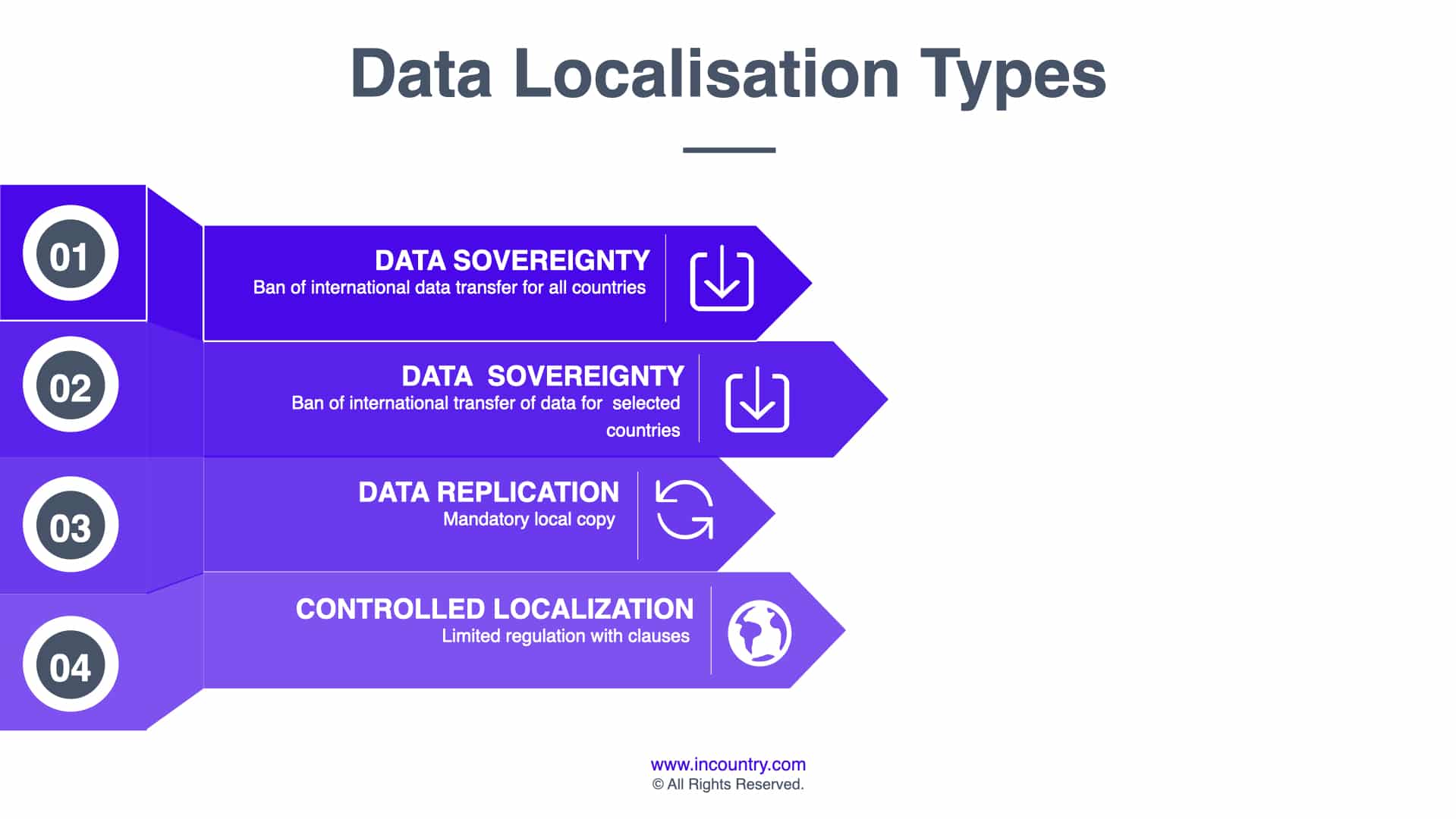
What are the leading cloud compliance regulations?
Almost every company now operates under some form of governmental regulation, regardless of industry. The most common ones of these are HIPAA, PCI-DSS, and SOX. Please refer to the information below to learn more.
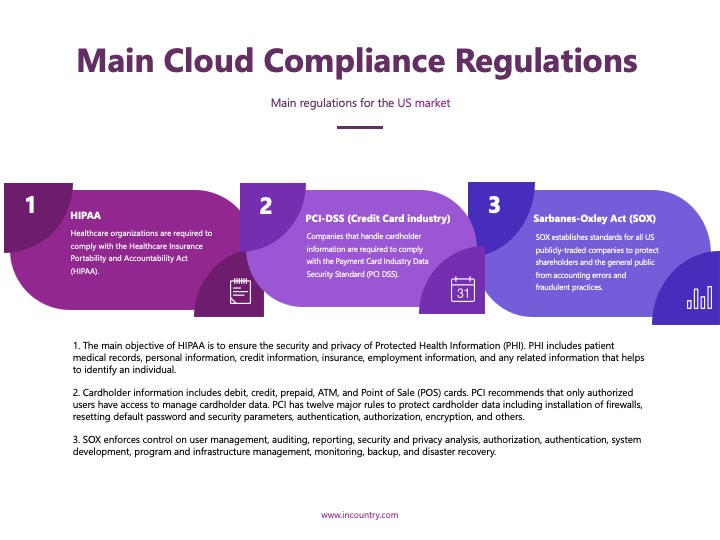
What compliance do challenges arise when using the cloud?
Compliance is an important concept that needs a great deal of attention because compliance failures can cause regulatory fines, lawsuits, cybersecurity incidents, and reputational damage. Therefore, it is imperative to understand the specifics of what the cloud provider offers and what your business requires.
Cloud compliance requires a clear understanding of data localization and data sovereignty. Data localization laws require that personal data is processed within a particular geographical area rather than with a cloud provider. Different laws in different countries may need you to adjust your cloud implementation.
Learn more about data localization laws in different countries here.
Enterprises choosing to rely on the cloud need to ensure that their third-party provider is not only in compliance with all industry regulations but is also up to code. It is essential that sensitive data is protected and customers, partners, and employees have their privacy ensured.
If your company operates within a regulated industry, such as the Finance or HealthCare industry, you are responsible for following the governing regulations since you are the owner and operator of the servers and on-premise storage systems.
Compliance can require the attention of many employees, additional funds to spend on external audits, and fines if the infrastructure is found to be out of compliance.
Cloud compliance checklist
Please review our cloud compliance checklist that will help you identify potential bottlenecks in your cloud migration strategy.
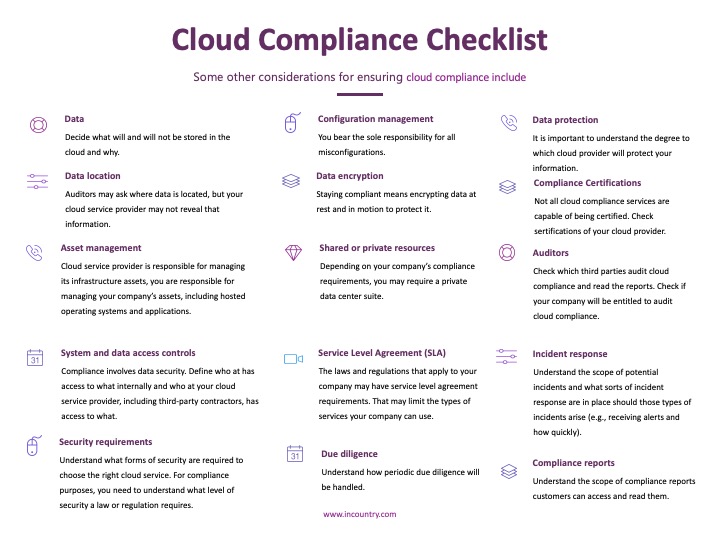
How InCountry helps scale your business and stay compliant in 90+ countries
Working in the cloud often provides organizations flexibility and convenience to scale their resources as needed. If you are considering scaling your business to countries with strict compliance regulations – like Russia, China, KSA, Indonesia, and others, you may need a compliance partner.
Over the past several years, InCountry has helped many businesses to leverage the cloud while enabling local compliance in 90+ countries. For enterprises looking for exponential global growth we are enabling your data to comply with local regulations – quickly, seamlessly, safely.
Please check our Compliance and security page to learn more about our certifications.
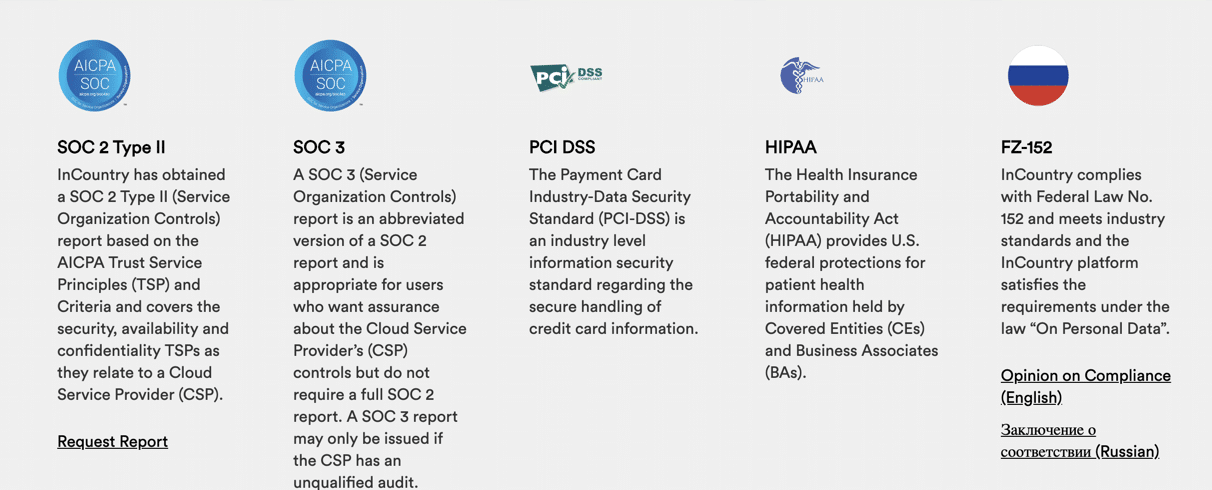
InCountry enables your custom apps to meet data residency requirements with minimal to no development, whether they are deployed in the cloud or on-premises.
Business and technical users alike can construct, control, and monitor any business-to-business, application, cloud integration using InCountry and take advantage of self-service and managed services.
Contact InCountry at sales@incountry.com today to learn more about data residency solutions for your business.


